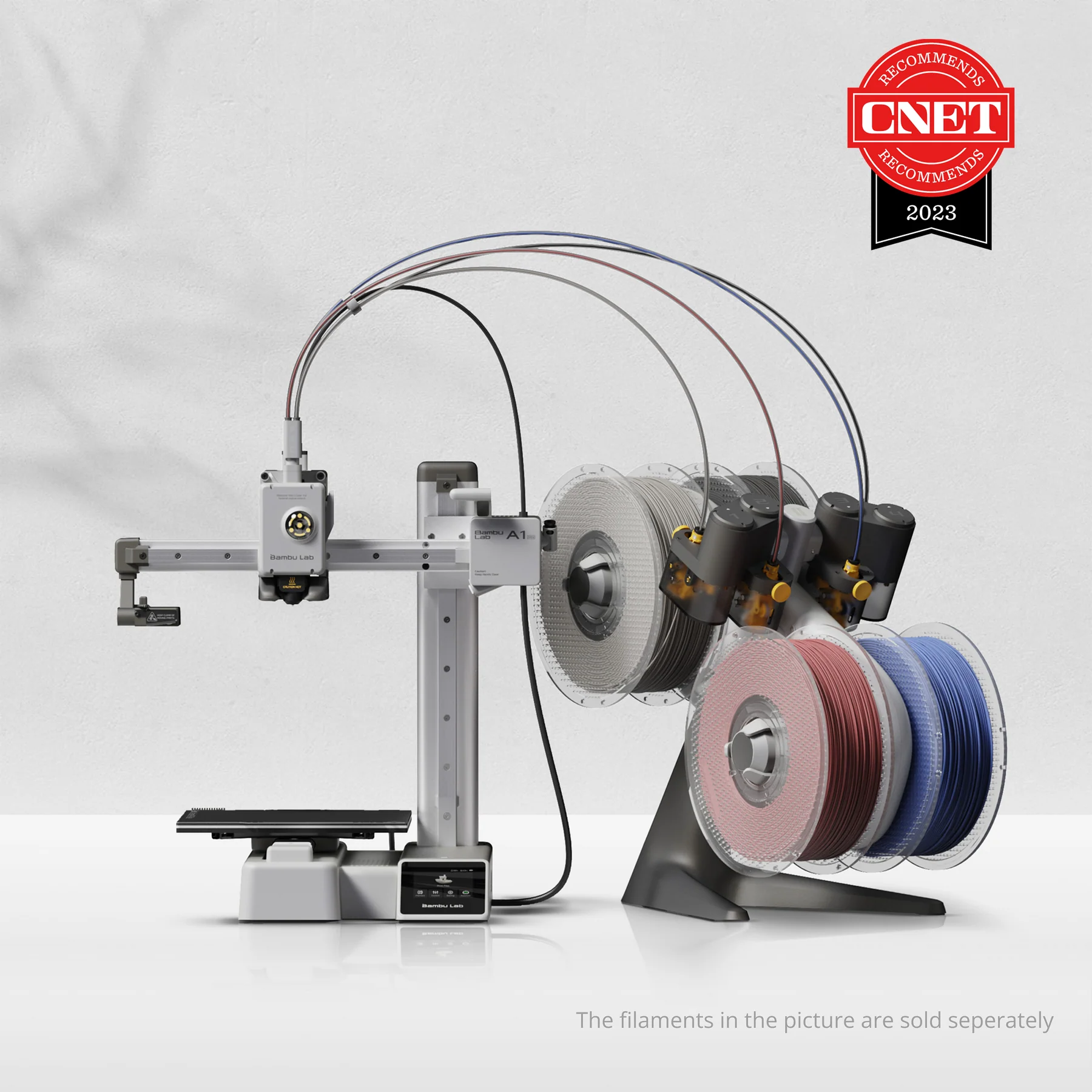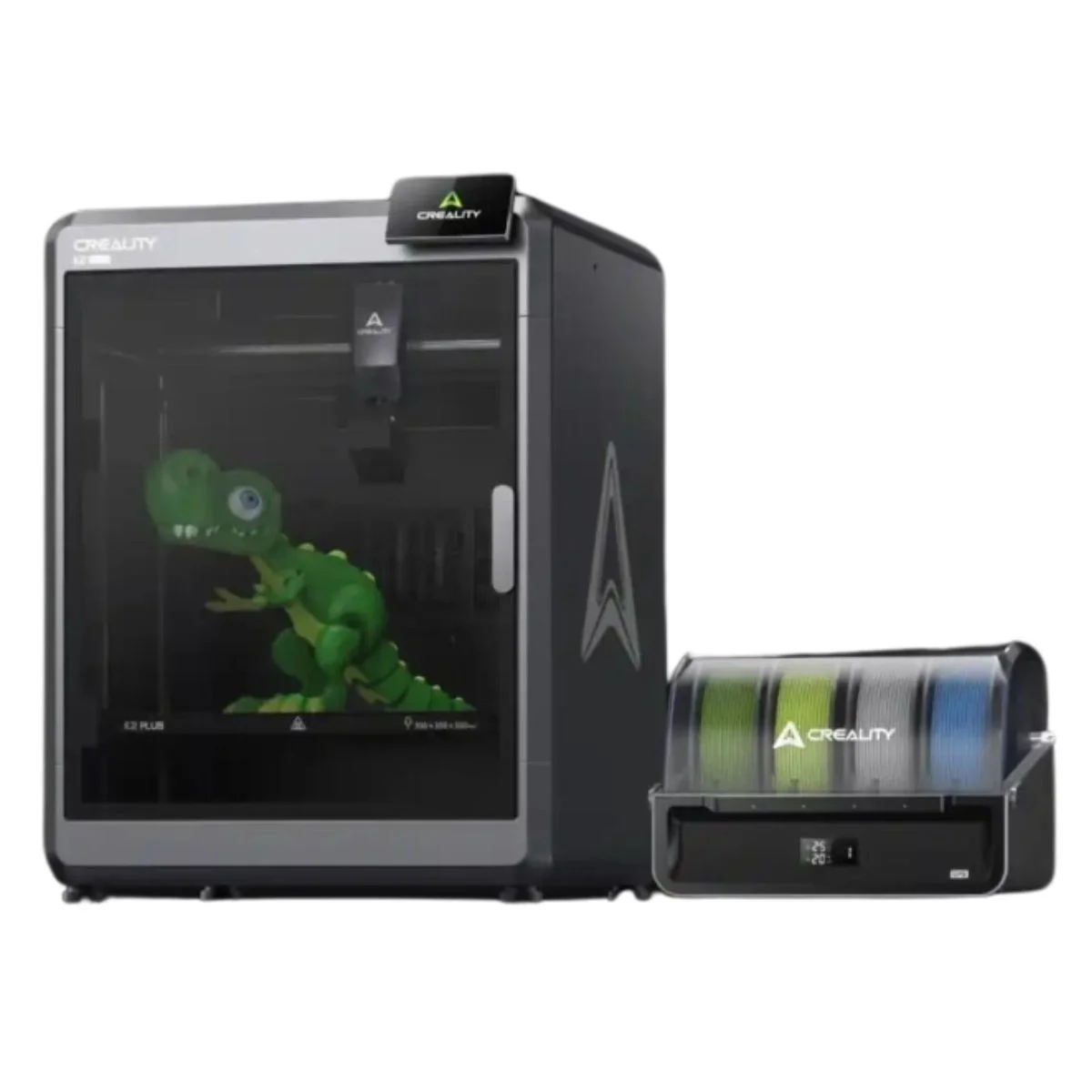Compare A1 Mini vs K2 Plus
Comparison between the best 3D printers
Choose the best 3D printer at the best price. The cheapest 3D printers are here.
Buy a 3D printer here with 3D Fila.
 |
 |
|
| Model | A1 Mini |
K2 Plus[BUY K2 Plus] |
| Printing Material | Filament | Filament |
| Buy Filament for Bambu Lab A1 Mini | Buy Filament forCreality K2 Plus | |
| Estimated price | $549,00 | $1500,00 |
| Manufacturer | Bambu Lab | Creality |
| Release Year | 2023 | 2024 |
| Print Volume [mm] | 180x180x180 | 350x350x350 |
| Printer Size [mm] | 315x347x365 | 495x515x640 |
| Weight [kg] | 5,5 | 33,5 |
| Power Loss Recovery | YES | YES |
| Enclosed printer | NO | YES |
| Bed Leveling | Automatic | Automatic |
| Filament End Sensor | YES | YES |
| Bed type | Heated | Heated |
| Power supply system | Direct Drive | Direct Drive |
| Standard nozzle | 0,4 | 0,4 |
| Maximum Nozzle Temperature [°C] | 300 | 350 |
| Maximum Bed Temperature [°C] | 80 | 120 |
| Maximum printing speed [mm/s] | 500 | 600 |
| Filament holder | YES | YES |
| Camera for supervision | YES | YES |
| Recommended filaments | PLA, PETG, TPU, PVA | PLA, PETG, PET, TPU, PA, ASA, PC, PLA CE, PA-CF, PET-CF |
| Recommended slicers | Bambu Studio, Super Slicer, Cura, Prusa Slicer, Orca | Creality Print 5, Bambu Studio, Super Slicer, Cura, Prusa Slicer, Orca Slicer |
| Maximum Resolution [mm] | 0,1 | 0,1 |
| Processor | 32-bit Silenciosa | |
| Display | Touchscreen 2,4'' | Touchscreen 4,3'' |
| Power Supply | 150 W | 1200 W |
| Connectivity | Wifi, Bambu bus, Cartão SD | USB / WIfi |
| Operating systems | Windows, Linux, Macbook | Windows, Linux, Macbook |
| Date of registration in the system | 2024-04-10 | 2024-06-26 |
| Release date | 2023 | 2024 |
| Extra features | The Bambu Lab A1 Mini stands out not only for its impressive speed and automatic calibration, but also for its multi-color printing capability thanks to AMS Lite. This innovative system makes multi-color printing easy, making it accessible to everyone. AMS Lite, specific to the A1 Mini, supports up to four different materials simultaneously, providing creative freedom without complications. With comprehensive sensors for energy monitoring and recovery, a camera for timelapses and Wi-Fi control, the A1 Mini and AMS Lite together offer an intuitive and advanced 3D printing experience, ideal for materials such as PLA, PETG and TPU, and designed for simplicity and fast maintenance with quick-change nozzles. | The Creality K2 Plus 3D Printer stands out for its multicolor printing, large build volume (350x350x350 mm) and Apus Direct Drive extruder with tri-metal protection nozzle. It features automatic anti-tilt leveling, FOC closed-loop motors and active chamber heating. In addition, it has an intelligent CFS filament management system, cameras for calibration and monitoring, a 4.3-inch touchscreen and advanced sensors to optimize the printing process. |
| Support for multiple colors and materials (AMS and CFS) | YES | YES |
Notes * |
||
| Cost-benefit | 7 / 10 | 7 / 10 |
| Hardware | 4.8 / 10 | 7.2 / 10 |
| Tela | . | . |
| Print volume | 3 / 10 | 4 / 10 |
| Performance | 4 / 10 | 5 / 10 |
| [BUY K2 Plus] |
Conclusion |
| In comparing the Bambu Lab A1 Mini and the Creality K2 Plus 3D printers, several key factors emerge that are crucial for potential buyers to consider. The A1 Mini offers an appealing entry point with a lower price and compact dimensions, making it suitable for hobbyists or those with limited workspace. Its innovative AMS Lite system for multi-color printing and lightweight design cater to ease of use and quick maintenance. The automatic calibration, along with an array of supported filaments, adds to its user-friendly characteristics. On the other hand, the K2 Plus commands a higher price and larger footprint, but it justifies this with its substantial build volume and advanced features like active chamber heating and intelligent filament management. With stronger performance metrics and support for a wider variety of materials, the K2 Plus is tailored for more serious printing tasks, appealing to professionals or enthusiasts keen on maximizing their 3D printing capabilities. In summary, the choice between the A1 Mini and the K2 Plus hinges on budget, space, and intended use. The A1 Mini excels in accessibility and ease of use for beginners, while the K2 Plus delivers on performance and versatility for those prepared to invest more for professional-grade features. Ultimately, your decision should align with your specific printing needs and financial considerations. |

